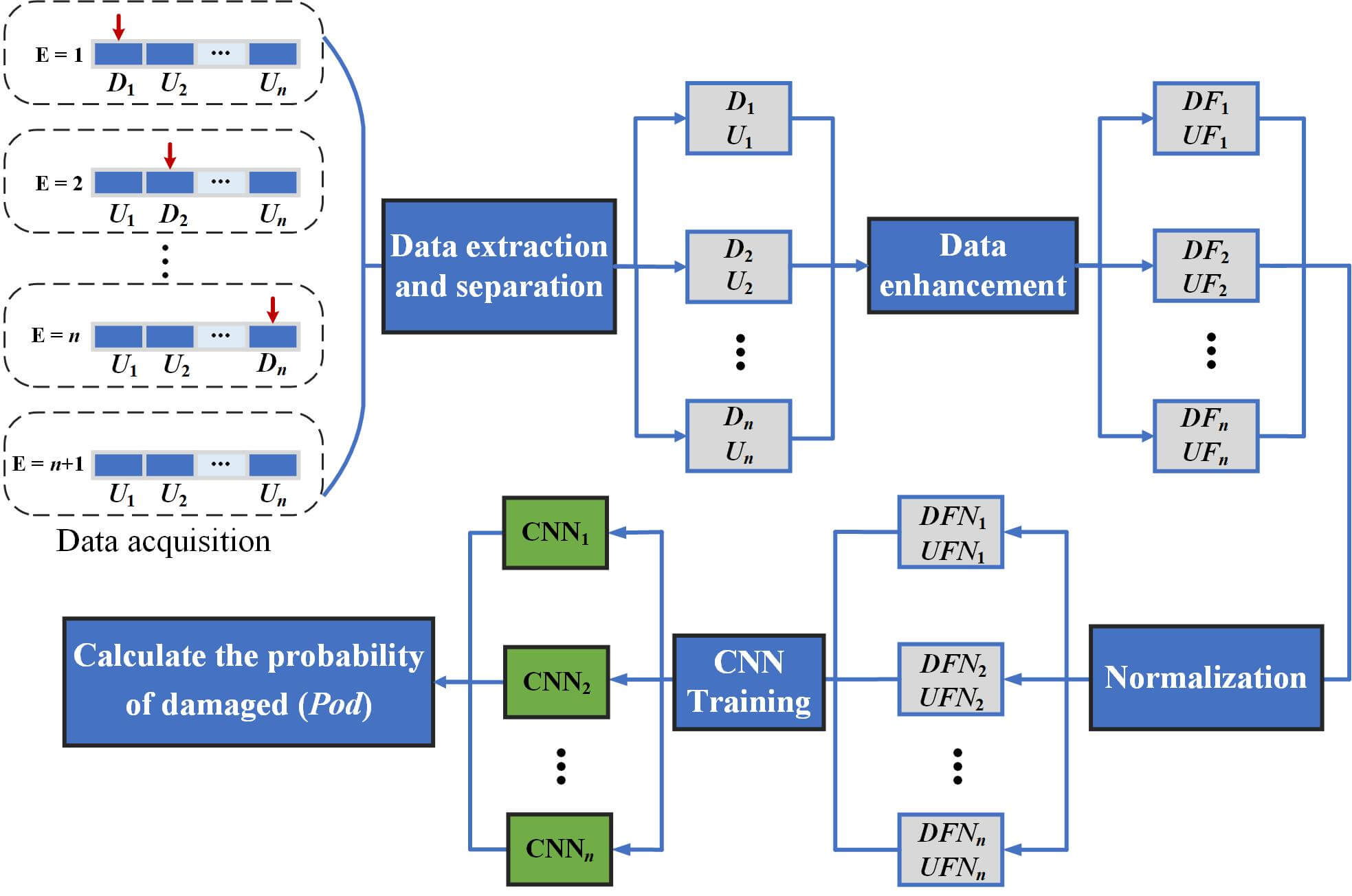 Open Access
Open Access
ARTICLE
Damage Diagnosis of Bleacher Based on an Enhanced Convolutional Neural Network with Training Interference
School of Mechanical and Equipment Engineering, Hebei University of Engineering, Handan, 056038, China
* Corresponding Author: Chaozhi Cai. Email:
(This article belongs to the Special Issue: Sensing Data Based Structural Health Monitoring in Engineering)
Structural Durability & Health Monitoring 2024, 18(3), 321-339. https://doi.org/10.32604/sdhm.2024.045831
Received 08 September 2023; Accepted 13 November 2023; Issue published 15 May 2024
Abstract
Bleachers play a crucial role in practical engineering applications, and any damage incurred during their operation poses a significant threat to the safety of both life and property. Consequently, it becomes imperative to conduct damage diagnosis and health monitoring of bleachers. The intricate structure of bleachers, the varied types of potential damage, and the presence of similar vibration data in adjacent locations make it challenging to achieve satisfactory diagnosis accuracy through traditional time-frequency analysis methods. Furthermore, field environmental noise can adversely impact the accuracy of bleacher damage diagnosis. To enhance the accuracy and anti-noise capabilities of bleacher damage diagnosis, this paper proposes improvements to the existing Convolutional Neural Network with Training Interference (TICNN). The result is an advanced Convolutional Neural Network model with superior accuracy and robust anti-noise capabilities, referred to as Enhanced TICNN (ETICNN). ETICNN autonomously extracts optimal damage-sensitive features from the original vibration data. To validate the superiority of the proposed ETICNN, experiments are conducted using the bleacher model from Qatar University as the subject. Comparative studies under identical experimental conditions involve TICNN, Deep Convolutional Neural Networks with wide first-layer kernels (WDCNN), and One-Dimensional Convolutional Neural Network (1DCNN). The experimental findings demonstrate that the ETICNN model achieves the highest accuracy, approximately 99%, and exhibits robust classification abilities in both Phases I and II of the damage diagnosis experiments. Simultaneously, the ETICNN model demonstrates strong anti-noise capabilities, outperforming TICNN by 3% to 4% and surpassing other models in performance.Graphic Abstract

Keywords
Cite This Article
 Copyright © 2024 The Author(s). Published by Tech Science Press.
Copyright © 2024 The Author(s). Published by Tech Science Press.This work is licensed under a Creative Commons Attribution 4.0 International License , which permits unrestricted use, distribution, and reproduction in any medium, provided the original work is properly cited.


 Submit a Paper
Submit a Paper Propose a Special lssue
Propose a Special lssue View Full Text
View Full Text Download PDF
Download PDF Downloads
Downloads
 Citation Tools
Citation Tools
